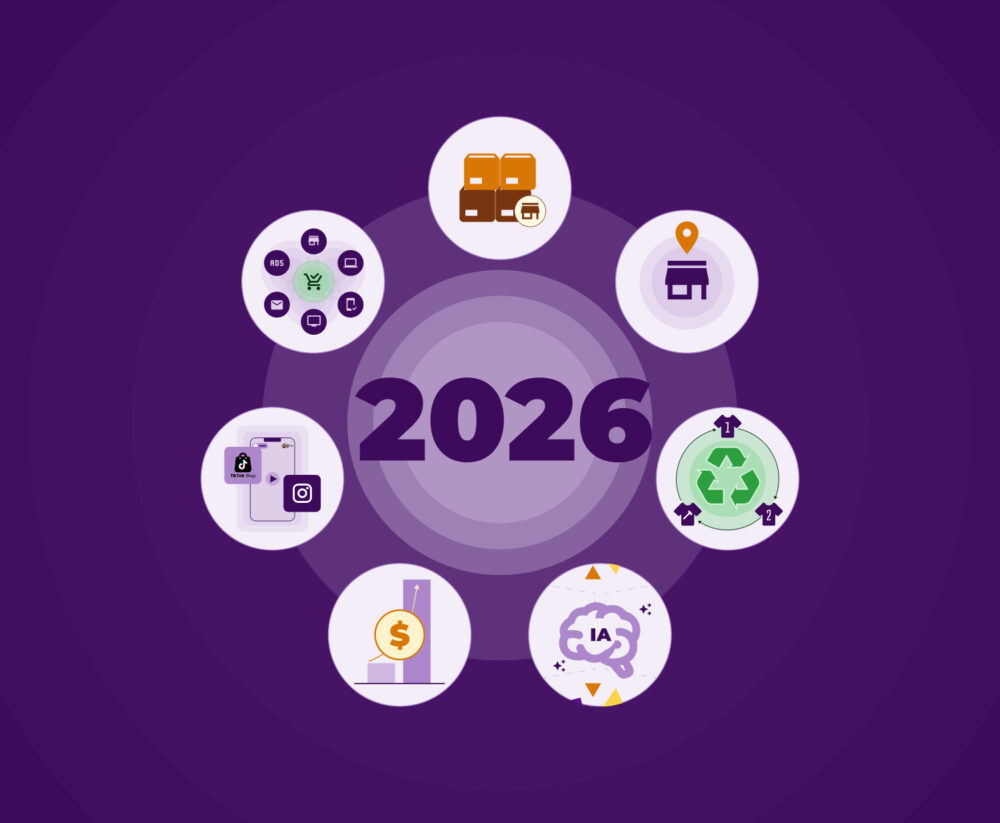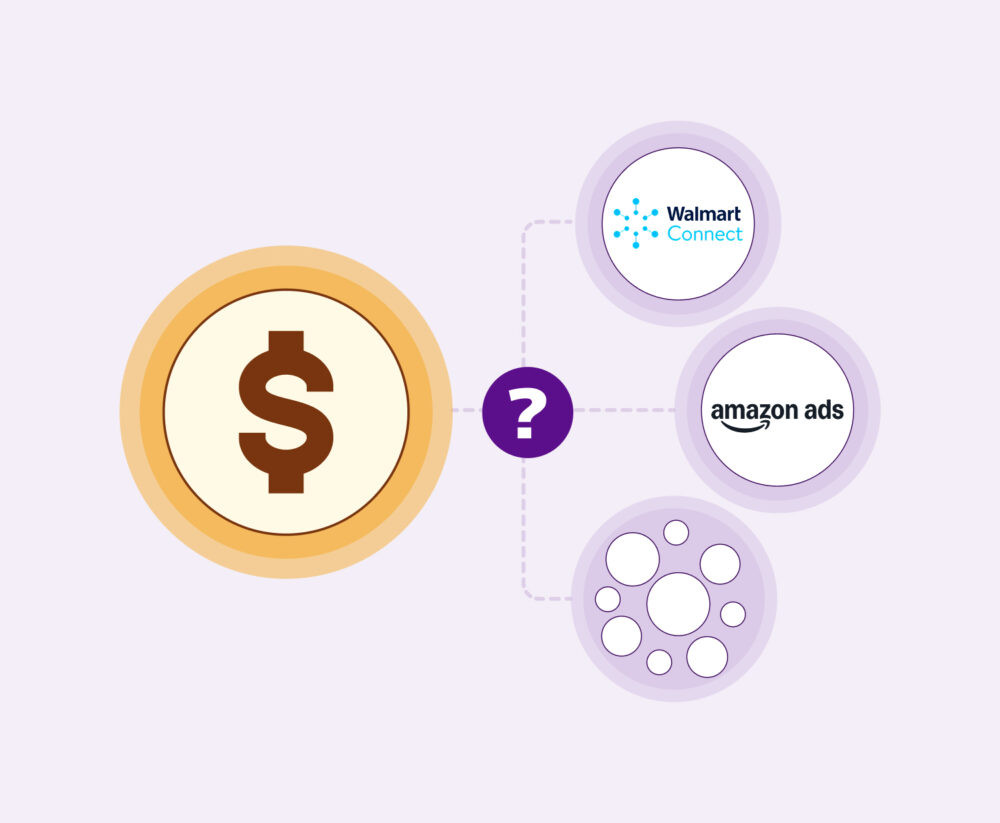Retail Data: The key to success in a cookie-less world
The retail industry is undergoing a seismic shift, driven by the rapid evolution of digital technologies and changing consumer behaviour. In this context, data has emerged as the most valuable currency, and among the various types of data, first-party data stands out as a goldmine for retailers. Collected directly from customers, it is becoming a fundamental pillar for the Retail Media strategies of the brands and manufacturers they work with. It allows companies to create personalised experiences, optimise marketing campaigns and increase revenue.
This article delves into the importance of first-party data in Retail Media, exploring its benefits, challenges and best practices for effectively leveraging it.
What is first-party data?
First-party data refers to information that a company collects directly from its customers or users through its own channels. This data can include information such as purchase history, website behaviour, email interactions or their preferences. Unlike third-party data, which is collected by external entities and often purchased, first-party data is owned and controlled by the retailer and is under their control. This makes it extremely valuable as it tends to be more accurate, relevant and better compliant with privacy regulations.
According to a Google study, 92% of digital marketing leaders believe that using first-party data to constantly understand what people want is crucial for growth.
In the context of Retail Media, first-party data includes information collected from both online and offline interactions. For example, when a customer makes a purchase (either in-store or online), registers for a loyalty programme or interacts with a brand on social media, they are generating first-party data. This data is crucial for retailers and brands who are looking to better understand their customers and deliver more personalised and effective marketing campaigns.
The rise of Retail Media Networks
Retail Media has become the buzzword in the marketing world, particularly as retailers like Amazon, Walmart or Carrefour have launched their own Retail Media Networks (RMNs).
These networks, as we have explained in previous articles, allow brands to advertise on the retailer’s platforms, leveraging the customer data the retailer has to target ads more accurately. As the importance of third-party cookies diminishes, due to stricter privacy regulations and browser changes, first-party data has emerged as a key asset for RMNs. And these have not stopped growing, adding more than 200 by the end of August 2024.
Retail Media networks use first-party data to offer advertisers the ability to target specific customer segments based on real purchase behaviours. For example, a dairy brand can use first-party data, obtained through a retailer, to create a campaign for a new product, targeting customers who have previously purchased similar items. This not only increases the likelihood of conversion, but also improves the relevance of ads for consumers. And, ultimately, everything leads to a better customer experience.
What benefits do first-party data bring to Retail Media?
1. Better customer understanding
First-party data provides retailers with a deep understanding of their customers. By analysing their purchase history, how they browse and interact with marketing channels, they can build detailed customer profiles. This knowledge allows them to predict future behaviour, identify trends and segment their audience more effectively. The result is a more targeted and relevant marketing strategy that resonates with customers on a personal level.
2. Absolute personalisation
Personalisation is a key driver of customer loyalty and satisfaction. With first-party data, retailers can create highly personalised experiences across various touchpoints of the customer journey. For example, a brand can use past purchase data to recommend products that a customer is likely to be interested in, or send personalised offers based on their browsing history. This level of personalisation helps build stronger relationships with customers and encourages repeat purchases.
3. Superior marketing campaign performance
As we mentioned in the first benefit, first-party data allows for more accurate segmentation. This accuracy helps to achieve more effective measurement of marketing campaigns. Retailers can use this data to identify high-value customer segments and allocate their advertising budget more effectively. By targeting the right audience with the right message, they will improve the performance of their campaigns, resulting in a higher ROI.
4. Greater control and compliance
Since this type of data is collected directly from customers, retailers have more control over how it is used. This is especially important in today’s climate, an era where data privacy is a constant concern. They can ensure that their data collection practices comply with regulations such as the General Data Protection Regulation (GDPR) in Europe and the California Consumer Privacy Act (CCPA). Furthermore, because first-party data is more accurate and reliable than third-party data, it reduces the risk of errors in targeting and data breaches.
5. Competitive advantage
In the competitive retail landscape, first-party data can provide a major advantage. Retailers who effectively leverage their data will be able to create more personalised and relevant experiences for their customers. This will make them stand out from competitors who rely on less accurate third-party data. As more retailers build their own Retail Media networks, the ability to leverage first-party data will become increasingly important to maintain a competitive edge.
6. Extracting customer insights
One of the greatest, although indirect, benefits that first-party data brings to retailers is its integration with customer insights analysis tools. This is a crucial process to maximise the value of information collected directly from customers.
This process works as follows: As we have already mentioned, data is collected through direct interactions with customers. Once collected, it is stored in Data Management Platforms or Data Warehouses, which allow for structured and secure management of the information. After storage, analysis tools are used, which are essential for processing and analysing large volumes of first-party data. Tools such as Google Analytics or more advanced paid CDPs allow the capture of behavioural data, which is fundamental for understanding customer preferences and needs.
Market research studies or surveys can also be analysed, which are another layer of first-party data from which to extract customer insights. To carry out the quick and accurate analysis of these enormous volumes of information, it is also necessary to apply Artificial Intelligence and Machine Learning. These technologies will help to extract deeper insights and to personalise marketing strategies, based on the data obtained.
Once the data has been processed, we would obtain the initial benefits that we have already explained. We can use it to better segment the audience (create target audiences, for example), personalise our campaigns, but no longer just for Retail Media, but also in other strategic areas of the company such as Marketing, Trade or Innovation, which will lead to higher performance.
Challenges posed by using first-party data
While the benefits of first-party data are evident, using it effectively in Retail Media presents its own challenges:
Data silos
One of the biggest challenges facing retailers is the fragmentation of data across different systems and departments. Data silos can prevent the obtaining of a holistic view of customers, limiting their ability to personalise experiences and optimise marketing campaigns.
Data privacy
As data privacy regulations become more stringent, retailers must ensure they are collecting and using first-party data correctly and securely.
Data quality and accuracy
The effectiveness of first-party data depends on its quality and accuracy. Inaccurate or outdated data can lead to poor segmentation and irrelevant customer experiences.
Scalability
With the growth of Retail Media Networks, the scalability of first-party data strategies becomes an important factor to consider. Retailers need to ensure their infrastructure can handle large volumes of data and support real-time analysis.
Best practices for retailers
Here are some of the best practices that retailers should follow if they want to maximise the value of first-party data in Retail Media and overcome the challenges discussed in the previous section:
1. Invest in data management infrastructure
A robust data management infrastructure is essential for collecting, storing and analysing first-party data. Retailers should invest in customer data platforms (CDPs) and data integration tools that can aggregate data from diverse sources and provide a unified view of the customer. This will enable more effective segmentation and personalisation across Retail Media channels.
2. Prioritise data privacy and compliance
Retailers should prioritise data privacy and compliance to build trust with their customers. This includes being transparent about their data collection practices, obtaining explicit consent and providing customers with control over their data. They will also need to stay up to date on changes in privacy regulations and adjust their strategies accordingly.
3. Focus on data quality
High-quality data is the foundation of effective Retail Media strategies. Retailers will need to implement data governance practices to ensure the accuracy, completeness and relevance of their first-party data. This includes regular data cleansing, validation and enrichment processes.
4. Leverage AI and Machine Learning
Artificial intelligence and machine learning can help retailers unlock the full potential of their first-party data. These technologies analyse large datasets to uncover patterns, predict customer behaviour and optimise campaigns in real time. By leveraging AI and ML, they will offer more personalised and relevant experiences to their customers.
5. Collaborate with brands
Retailers can increase the value of their first-party data by collaborating with brands. By sharing knowledge and data, they will enable the creation of more specific and effective campaigns that benefit both parties. Retail Media networks provide an ideal platform for this type of collaboration, allowing brands to reach the right audience with precision.
The future of first-party data in Retail Media
Retail and CPG professionals have reached a turning point where they have realised that the future will not only consist of collecting data. On the contrary, success will require managing first-party data strategically in four fundamental ways: advanced loyalty programmes, personalised content, Retail Media solutions and data monetisation.
Retailers who invest in the right data infrastructure, prioritise data privacy and leverage advanced technologies will be well positioned to thrive in this new era. First-party data will not only drive more personalised and effective marketing campaigns, but it will also allow them to build stronger relationships with customers, leading to long-term success.
In a post-cookie world, Retail Media networks of all sizes will find the best opportunities in Retail Data. Or, in other words: in consumer data. According to an article published by Suzanna Stevens, Brand Sales Director for the company Adstra, if we look at the Retail Media market in the United States, Amazon, with a 75% market share, shows the power of integrating first-party data to drive targeted advertising strategies. Smaller RMNs face an uphill battle to prove their effectiveness in data accuracy. The top 10 retailers are gobbling up most of the investment in digital advertising, drowning out the voices of smaller networks.
However, this is where a golden opportunity lies. Mid-sized Retail Media networks can carve out a niche by capitalising on a unique value proposition: that of capturing traffic at moments of high purchase intent. In an era where cookies are becoming obsolete, affecting targeting, this value proposition would be something like the holy grail for advertisers. It is in their hands to know how to take advantage of it and fully embrace the future of first-party data to achieve success.




